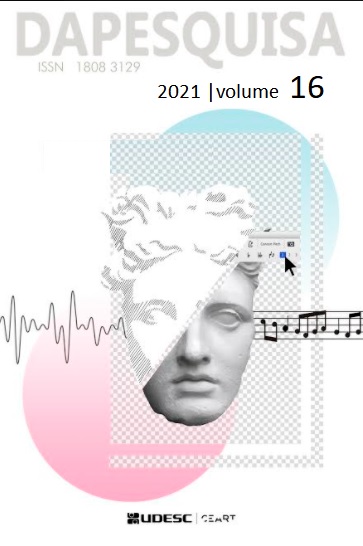Considerations on the presence of still life in contemporary art
DOI:
https://doi.org/10.5965/18083129152021e0031Keywords:
Art, Modern - 20th century , Still-life painting, Art- History, Idols and imagesAbstract
This article is based on the author's master's thesis about the presence of still lifes in contemporary art. Its purpose is to examine how still lifes in art history go beyond the chronology of time and mark their presence in contemporaneity. From a methodological approach based on bibliographic research and the iconographic study proposed by Georges Didi-Huberman, it presents a comparative analysis between images from different times through the following elements: persistence of motifs, persistence of forms, communication and news. So, it’s concluded that still lifes survive history and are adapted in contemporary art in a contesting and plural way, producing other meanings beyond the previous and conventional ones.
Downloads
References
DIDI-HUBERMAN, G. A imagem sobrevivente: história da arte e tempo dos fantasmas segundo Aby Warburg. Rio de Janeiro: Contraponto, 2013a.
DIDI-HUBERMAN, G. Diante da Imagem. São Paulo: Editora 34, 2013b.
DIDI-HUBERMAN, G. Diante do tempo: história da arte e anacronismo das imagens. Belo Horizonte: Editora UFMG, 2015.
RANCIÈRE, J. O espectador emancipado. São Paulo: WMF; Martins Fontes, 2012.
SCHNEIDER, N. Naturezas-Mortas. Lisboa: Taschen, 2009.
Published
How to Cite
Issue
Section
License
Copyright (c) 2021 Milena Regina Duarte Corrêa, Altamir Moreira

This work is licensed under a Creative Commons Attribution 4.0 International License.
Authors who publish in this journal agree to the following terms:
The authors retain the copyright and grant the journal the right of first publication, with the study being simultaneously licensed under the Creative Commons Attribution-Noncommercial License, which allows the sharing of work with acknowledgment of authorship and initial publication in this journal.
This journal, following the recommendations of the Open Access movement, provides public access to all its content, following the principle that free access to research leads to a greater global exchange of knowledge.
Plagiarism in all its forms constitutes unethical publication behavior and is unacceptable. The Journal DAPesquisa reserves the right to use software or other methods of detecting plagiarism to analyze submitted works.





